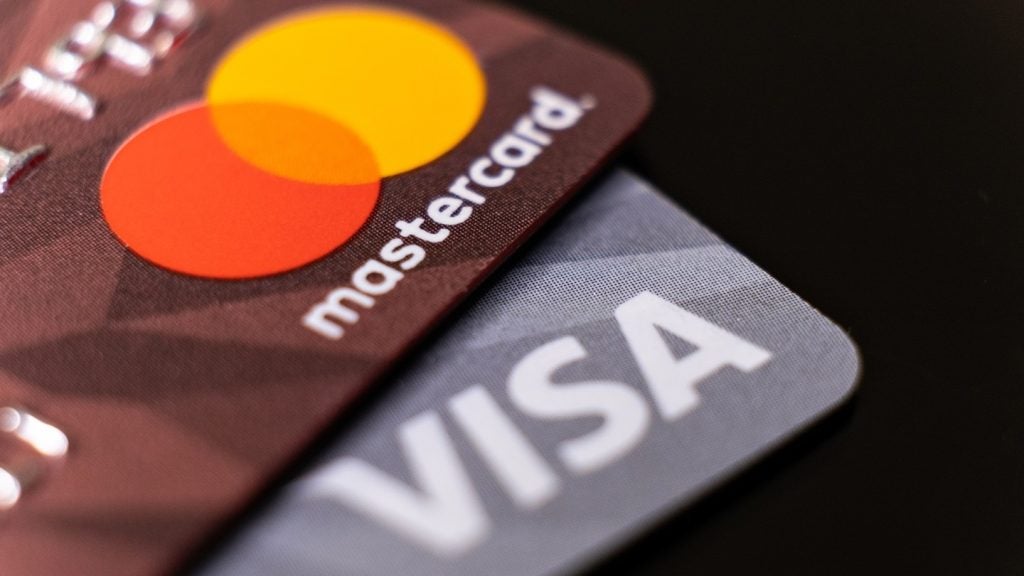The global payments industry accounted for 34% of overall banking revenues in 2016, up from 27% just five years earlier. And according to McKinsey, for the next five years, annual revenue growth will average annual growth of 7%. By 2020, payments will be a $2trn dollar industry, writes Douglas Blakey
The payments industry outperformed most financial services sectors in 2016, with total revenues easily outpacing GDP growth.

Access deeper industry intelligence
Experience unmatched clarity with a single platform that combines unique data, AI, and human expertise.
The cards sector remains in rude health; globally card revenues are expected to grow at more than 7% percent per year for the next five years.
While the dynamics underpinning performance in various countries vary – revenue drivers in China are starkly different than those in the US for example – revenues from consumer payments have overtaken business payments revenues, and will continue to outpace them.
According to a report from McKinsey, Global Payments 2017: Amid Rapid Change, An Upward Trajectory, the major sources of growth from a geographic perspective were Latin America (19% growth from 2015-16) and North America (6%).
Encouragingly for the industry, fee-based revenues now nearly equal liquidity-based revenues (i.e., those driven by interest margins), providing a buffer for payments revenues against more volatile rate-related income streams.
The dynamics underpinning performance differ from market to market: Asia–Pacific, the largest payments market (accounting for 45%, or $725bn, in revenues), derives the bulk of its revenues from commercial payments.
In credit-card driven North America, two-thirds of revenues come from the consumer side.

US Tariffs are shifting - will you react or anticipate?
Don’t let policy changes catch you off guard. Stay proactive with real-time data and expert analysis.
By GlobalDataKey take-aways of the report include:
Cross-border transactions: including e-commerce payments, cross-border tuition, and payments involving SMEs—are still generating substantially higher margins than domestic ones, which are as high as up to 100 times for retail remittances.
Digital challengers are exploiting this profitable space, building strong portfolios with high valuations.
Despite changing customer attitudes and behaviour (e.g., a shift away from carrying balances), credit cards remain the primary revenue driver across the Americas—responsible for 47% of revenues in North America, and 40% percent in Latin America.
The war on cash continues: In the UK, debit card usage has overtaken cash at the – point of sale; in the Netherlands and Sweden, use of cash for all payments has dropped below 35% and 20%, respectively.
Notably, there is a correlation between countries with high electronic transaction growth and high revenue growth—which should allay concerns that the continuing war on cash will lead to lower unit revenues.
Marc Niederkorn, McKinsey Partner and report co-author said:
“Looking ahead, non-banks are stepping up the pace of innovation, and the advent of open banking regulations in the UK, EU and elsewhere, and the development of e-commerce ecosystems will fuel significant disruption in the coming years.
Our report findings suggest that financial institutions will need to play a formative rather than reactive role in this transformation if they are to keep pace.”
Phil Bruno, McKinsey Senior Partner and report co- author added:
“Our research shows that globally, consumer payment revenue growth has overtaken commercial payment growth for the first time in recent memory – a trend set to continue alongside the demise of cash, with card revenues continuing to grow at 7% per year for at least the next five years.”
Consumer payments growth driven by credit cards in all regions
Although the consumer sector shows healthy growth, the position is not uniform across regions. McKinsey notes that Asia–Pacific business revenues continue to dominate, and actually increased their share in 2016 to 64%
In the other three regions, consumer payments are driving the majority of growth; in both North America and Latin America consumers account for nearly 70% percent of total revenue.
The balance is quite even in EMEA, with the consumer sector having edged ahead in 2016 largely as a result of the depressed interest rate environment.
In absolute terms, credit cards provided the greatest lift to consumer payments across nearly all regions (with the exception of Latin America, where account balances contributed somewhat more). At the same time, commercial payments growth slowed down—particularly in EMEA, due to the decline in interbank interest rates.
The well-documented momentum toward open banking protocols (including regulations such as PSD2 in the EU) will drive many such growth opportunities, with the potential to alter the competitive balance between banks and nonbanks.
As with many of these high-growth avenues McKinsey notes that the challenge – and opportunity – for payments providers is to wrap seamless value-added services around the core payments transaction.
Although consumers show a greater propensity to pay their monthly spend in full rather than carry balances, credit cards remain the primary revenue driver in the Americas and are projected to extend their lead. In North and Latin America, credit cards alone comprise 47% and 40%, respectively, of payments revenue
Cross-border margins resilient
Cross-border transactions still generate substantially higher margins than domestic ones, even as the volume of cross-border commerce and small and medium-size business trade increases. Cross-border transactions, both remittances and ecosystem-based payments, deliver lucrative margins of up to 100 times their domestic counterparts for retail remittances.
The average margin on a cross-border consumer-to-consumer transaction is 635 basis points, compared to 6 domestically, due to the greater complexity, the additional foreign exchange revenues, and the premium positioning of the service.
B2C remains the greatest opportunity
Payments between consumers and businesses represent the largest opportunity, despite heightened competition and a frequent focus on B2B and C2C. Among revenues attributable to specific counterparty transactions, 35% stem from B2B transactions.
However, 60% percent relate to customer-to-business (C2B) transactions—nearly three-quarters of that amount accruing to the originating—that is, the consumer’s institution.







